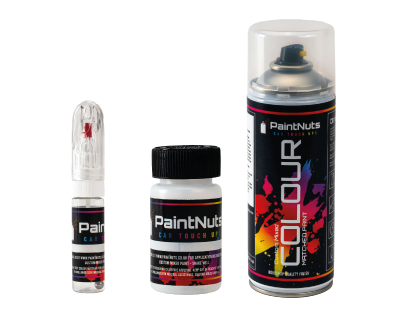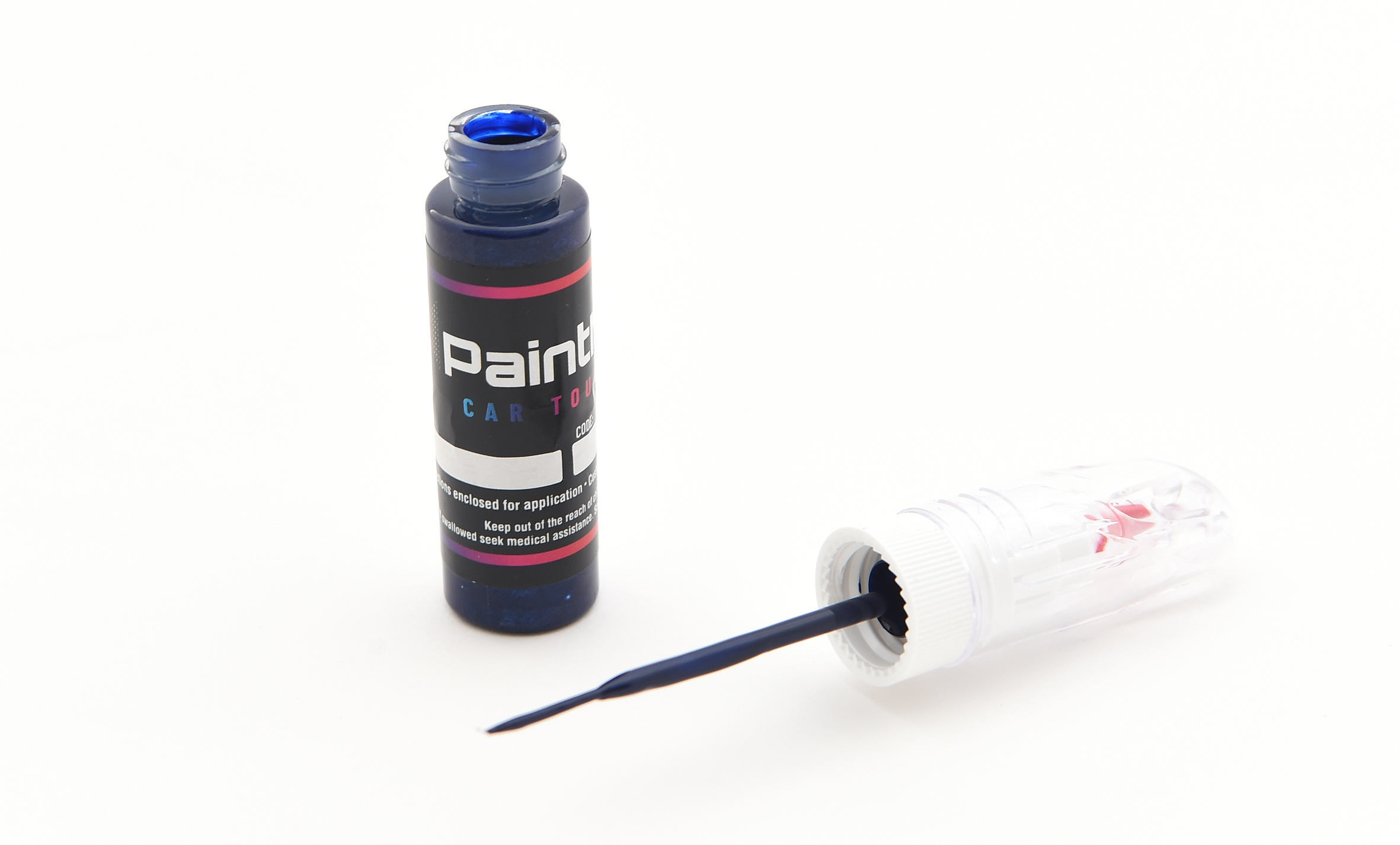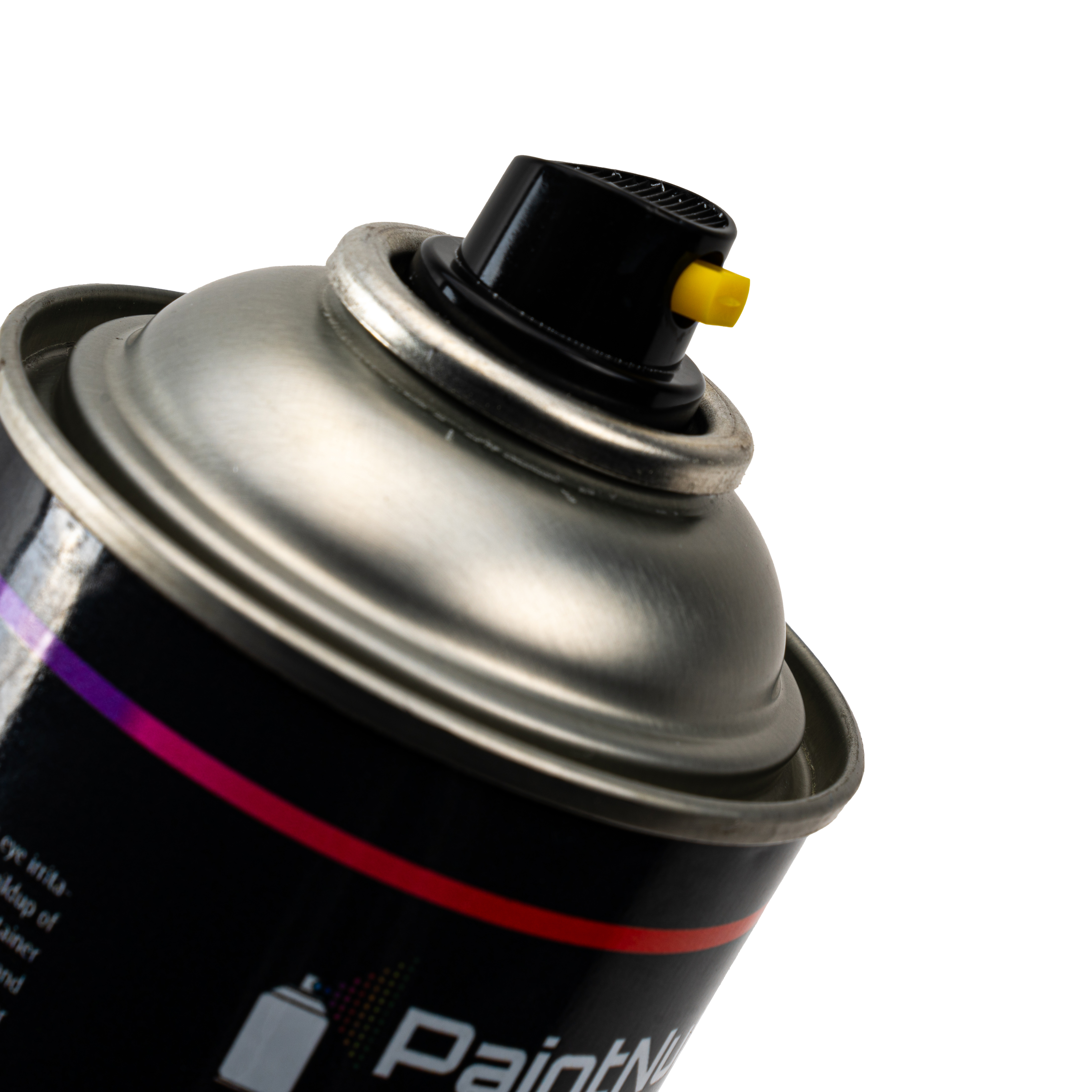How to touch up chips, scratches and scuffs with either a pen, pot or aerosol

You can fix minor paint damage to your car yourself, getting a good result using our bodyshop-grade paint that’s an exact match to your car’s original colour.
Our car paints are available in 3 sizes; touch-up pen, bottle or aerosol depending on the damage.
- Touch-up pens are perfect for scratches and small chips
- Touch-up bottle - good for scratches and chips that cover a larger area/ require more paint
- Aerosol - ideal for more complex repairs that need to be blended into existing bodywork.
Here’s our best practice guide to using and applying touch-up paint, whether it comes from a pen, bottle or aerosol.
-
-
How to use the touch-up paint pen
-
 Step 1 – Shake
Step 1 – Shake
- Shake the pen thoroughly for at least 60 seconds.
- For the needle point pens – remove the clear lid with a firm pull. Unscrew the white collar to access the brush.
- If there’s any doubt on colour match, test in a discreet area and let dry for 10 minutes – paints will often appear different in colour in the bottle, when wet or if applied incorrectly.
Step 2 – Prepare
- The surface must be clean and dry - make sure all wax, polish and dust is removed.
- If you have a deep scratch or chip OR if you can see metal or plastic we recommend using a primer first.
- If rust is present, we suggest a rust treatment as well.
Step 3 – Paint
- Using either pen or brush apply thin, light coats in smooth strokes; if you’re using the needle point pen allow the nib to sit in the scratch or chip and squeeze gently.
- Leave paint to dry for 10-25 minutes before applying a second coat if required. Leave paint to cure for 24 hours till hardened before applying lacquer or polishing.
-
How to use the touch-up paint pot
 Step 1 – Shake
Step 1 – Shake
- Shake the bottle thoroughly for at least 60 seconds.
- Unscrew the lid to access the brush which is inside the actual paint.
- If there’s any doubt on colour match, test in a discreet area and let dry for 10 minutes – paints will often appear different in colour in the bottle, when wet or if applied incorrectly.
Step 2 – Prepare
- The surface must be clean and dry - make sure all wax, polish and dust is removed.
- If you have a deep scratch or chip OR if you can see metal or plastic we recommend using a primer first.
- If rust is present, we suggest a rust treatment as well.
Step 3 – Paint
- Using either pen or brush apply thin, light coats in smooth strokes; if you’re using the needle point pen allow the nib to sit in the scratch or chip and squeeze gently.
- Leave paint to dry for 10-25 minutes before applying a second coat if required. Leave paint to cure for 24 hours till hardened before applying lacquer or polishing.
-
How to use the car paint aerosol
 Step 1 – Shake
Step 1 – Shake
- Shake aerosol for at least 2 minutes.
- Before spraying the vehicle we recommend testing the colour.
- Our body shop quality adjustable nozzle allows you to spray either horizontally or vertically.
Step 2 – Prepare
- It is always advisable to flatten down the area first using wet and dry sandpaper.
- The surface must be clean and dry - make sure all wax, polish and dust is removed.
- For most repairs, we recommend using a primer.
Step 3 - Paint
- Either vertically or horizontally apply in smooth cross coats 250mm distance from the repair.
- Leave to dry for 15 minutes before applying a second coat if necessary.
- Leave 24 hours before applying lacquer.
- After use, turn the aerosol upside down to empty the nozzle valve to clean, so it can be reused at a later date.
PaintNuts scratch and chip repair top tips
The Do’s and Don’ts
- Do – use a primer first if bare metal or plastic shows or in particularly deep scratches or chips.
- Do – test the colour after giving it a good shake as different paints in the mixture weigh differently and will settle so colours in the bottle or pen can look misleading– it needs to be thoroughly shaken and tested in a discreet area to compare.
- Do – use a lacquer if the paint is very metallic or pearlescent.
- DO NOT - get paint on original undamaged paint work as it will make the colour darker drawing attention to the repaired area.
- DO NOT –apply paint in cold, damp weather – it will affect the application and finish, especially with aerosols.
- DO NOT – apply the paint too thick –to get the best results and avoid running drops it requires thin layers to build it up to original height.
- DO NOT – wash your car with a power washer for the first week after touching up paint work.
Ready to buy?
Our advanced paint mixing system can mix more than 80,000 different colours to produce an exact original colour match for all makes and models of cars, vans and motorcycles.


